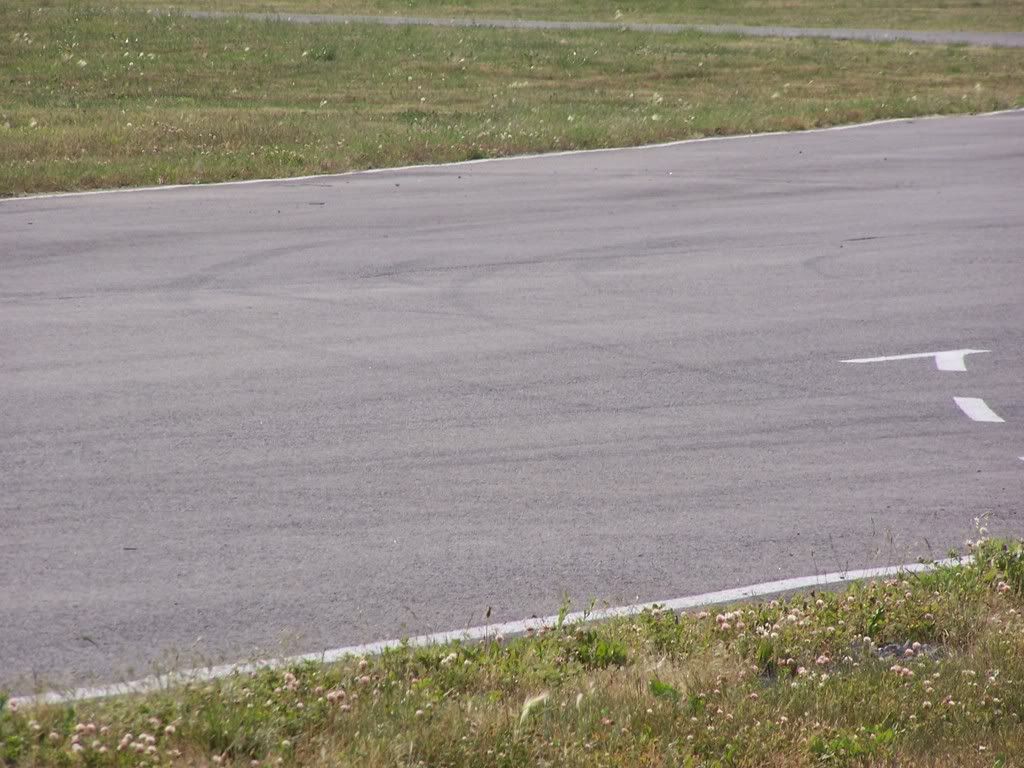im not trying to start anything.
Im just going on what a few driving instructors have told me in the past.
because i was guilty of “riding the brakes” into the corner.
I always thought the longer you apply friction between two objects the more heat it generates.
taken from the first racing brakeing website i found.
" * There’s no coasting in racing! You should always be on the throttle or on the brakes. And you should be on the brakes as little as possible.
* Keep it smooth. Braking smoothly keeps the car settled. Slamming on the brakes unsettles the car, risks lock-up, and is less effective.
[SIZE=“3”]* Brake as hard as you can, and as late as you can, without locking up your brakes.
* Maximum braking occurs just before the tires lock up: there’s a fine line between great braking technique and wheel lock-up.
* When you’re braking, tire noise is a good thing; it means you’re using the brakes at their limit. Tire smoke, on the other hand, is a bad thing; it means you’re locking up your tires.
No Coasting!
Telemetry data shows that most professional racers spend less than 10 percent of each lap braking. The other 90 percent is spent on the throttle. In other words, there's no coasting in racing! <b>If your foot is not pressed firmly on the gas pedal, it should be planted solidly on the brake pedal.</b> The only exception is the more advanced technique of trail-braking, discussed below.
Threshold Braking
Threshold braking is the technique of using your brakes to their full potential without locking up your wheels (in other words, braking to the "threshold" of locking up). Also known as straight-line braking, it is one of the fundamental skills you need to develop as a competent race car driver.
Keep in mind that “using your brakes to their full potential” does not mean stomping the brake pedal to the floor. This crude approach usually results in lock-up, flat-spotted tires, and a slide-none of which is desirable in a racing situation.
When braking in a straight line, successful threshold braking requires that you press quickly, smoothly, and firmly on the brake pedal to initiate the braking process. Continue pressing until you feel your tires responding. You want to apply enough pressure to put the tires to work, stopping just short of locking them up. Developing a sensitivity to the car's response to your control takes time and practice, and is a crucial first step.
Once you feel your tires responding to your braking input, hold steady on the brakes as the weight of your vehicle transfers to the front of the car. This weight transfer increases the size of the contact patches of the front tires, which translates into increased traction.
As the weight of your car transfers to the front tires, you can apply more brake pressure with less risk of locking them up. At this point, you need to focus on progressively applying more brake pressure until your tires are alternating between slipping and gripping, but not quite locking up.
Remember: Maximum braking occurs just before lock-up, and you will find yourself locking up often as you hone your technique. Your goal is to achieve lock-up for mere fractions of a second before rotating again. Slip, Grip, Slip, Grip, Slip. Keep in mind that no one said this would be easy!
Tire noise is an excellent gauge of the effectiveness of your threshold braking technique; it's a good indication that your tires are slipping under braking, which is what you're aiming for. On the other hand, tire smoke and a herky-jerky ride down the straightaway (because of flat-spotted tires) are clear indications that you need to practice your technique.
As you slip and grip your way through the final stages of braking, you need to focus on modulating your brake pressure. You will find that you need to apply less braking input as you slow down. Resist the urge to keep slamming down on the brakes! A gentle touch will achieve much more desirable results.
Trail-Braking
Trail-braking is an advanced technique that involves braking and turning into a corner simultaneously. Once you've mastered the art of threshold braking, you may want to try trail-braking.
Trail-braking requires a light touch: You risk locking up the front tires if you press on the brakes too hard, and you also risk slowing down more than you need to as you enter the turn.
One of the most common mistakes rookies make while attempting trail-braking is trailing on the brakes too far into the corner, which means that you are slowing down more than necessary. Remember, you want to be off the brakes as much as possible!
Lingering on the brakes as you steer into a corner can also induce oversteer, which can come in handy if you're heading into a hairpin or other type of decreasing radius corner. With the majority of the car's weight and grip centered on the front tires as you linger on the brakes, the rear of the car may have a tendency to "go loose" and actually help rotate the vehicle into the perfect position for completing the cornering sequence. Just be careful not to linger too long on the brakes, as you may induce too much oversteer and find yourself in a spin.</i>[/SIZE]"
We all know it takes the same amount of force to stop a moving object when its moving.
but if that force is applied strongly within a short amount of time it should generate lest heat from friction than using the same amount of force spread out for a longer duration of time.
im not a physics major, nor an engineer. someone help me out, correct me if im wrong.

